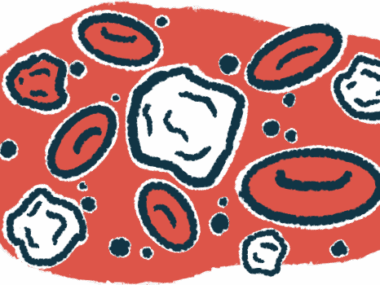Type of Multiple Myeloma May Affect Responses to Darzalex, Study Finds
Written by |

A new study reports that the specific type of multiple myeloma (MM) may affect how long the drug Darzalex (daratumumab) remains in circulation, affecting its effectiveness for the treatment and management of the disease.
Results from the study, “Influence of Disease and Patient Characteristics on Daratumumab Exposure and Clinical Outcomes in Relapsed or Refractory Multiple Myeloma,” were published in the journal Clinical Pharmacokinetics.
Darzalex has received U.S. and European approval for use as a monotherapy in previously treated patients with relapsed or refractory MM. It is a monoclonal antibody that binds with high specificity to the CD38 protein found on the surface of myeloma cells. Once bound to CD38, the drug induces an immune response that ultimately results in the death of myeloma cancer cells.
Antibodies can be classified into five main subtypes (IgA, IgD, IgE, IgG, and IgM) based on the sequence and structure. Darzalex is an IgG monoclonal antibody.
However, the malignant cells of MM patients can produce large amounts of antibodies (called the myeloma protein, or M-protein), including IgG. The excess IgG already present in the blood and marrow of MM patients may interfere with clearance of the therapeutic antibody, as well as levels of exposure to the drug.
So, researchers at Janssen, the drug’s developer, set out to evaluate if the type of antibody produced by myeloma cells affects the clearance and exposure of Darzalex. Specifically, they evaluated differences between IgG and non-IgG MM patients.
They used data collected from two Phase 2 clinical trials: GEN501 (NCT00574288) and SIRIUS (MMY2002; NCT01985126), totaling 228 patients. Of these patients, 151 received the recommended dose of 16mg/kg of Darzalex, and 233 had available pharmacokinetic samples.
Serum trough levels often are used in pharmacokinetic studies. They measure the lowest concentration that a drug reaches before another dose is administered.
Among IgG myeloma patients, Darzalex clearance was 110 percent higher compared to non-IgG myeloma patients.
On the first day of the third cycle of Darzalex administration, the predicted trough serum concentrations in non-IgG myeloma patients were approximately 70 percent higher than those of IgG myeloma patients. This means that the amount of drug left in circulation is higher in non-IgG MM patients and that the drug is cleared from circulation faster in IgG MM patients.
Despite the difference in clearance levels between IgG and non-IgG MM patients, the response rates to Darzalex in these patient populations were similar.
But further analysis showed that, for a given exposure, which takes into account both time and concentration of a drug, Darzalex was almost two times more effective in myeloma patients producing IgG antibodies compared to non-IgG MM patients. This suggests that patients with IgG myeloma may be more responsive to this treatment.
There were no reported differences in adverse events due to Darzalex treatment between the different MM patient subgroups.
This is the first study to show lower concentrations of a therapeutic antibody in patients with IgG MM patients compared to patients with non-IgG MM. These results point to a need to carefully consider the disease characteristics and type of MM when evaluating clinical outcomes after treatment with antibody-based therapies.






